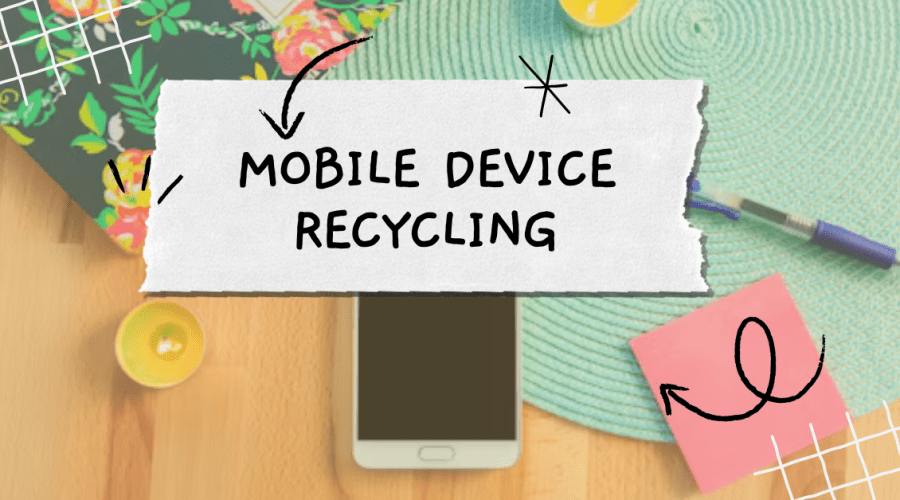With the rapid advancement of technology, mobile devices have become indispensable tools in our daily lives, enabling communication, productivity, and entertainment on the go. However, the proliferation of mobile devices also poses environmental challenges, as these devices contribute to electronic waste (e-waste) when discarded improperly. Mobile device recycling, as an extension of IT recycling, plays a crucial role in mitigating these environmental impacts and promoting sustainable resource management. In this comprehensive guide, we will delve into the importance of mobile device recycling, the recycling process, challenges and opportunities, and the role of individuals and organizations in promoting responsible recycling practices.
I. Importance of Mobile Device Recycling
Environmental Impact
- Mobile devices contain various components, including metals, plastics, and electronic circuitry, many of which are non-renewable resources. When improperly disposed of, these devices can release hazardous substances into the environment, polluting air, soil, and water.
Resource Conservation
- Recycling mobile devices allows for the recovery and reuse of valuable materials, such as gold, silver, copper, and rare earth elements. By recycling these materials, we can reduce the need for virgin resource extraction and minimize the environmental footprint of mobile device production.
Energy Savings
- Recycling mobile Phones requires less energy than mining and refining raw materials from scratch. By conserving energy during the recycling process, we can reduce greenhouse gas emissions and mitigate climate change impacts.
The Mobile Device Recycling Process
Collection and Sorting
- The mobile device recycling process begins with the collection of used devices from consumers, businesses, and electronic waste recycling centers. These devices are then sorted based on factors such as model, condition, and type of materials.
Disassembly
- Once sorted, mobile devices undergo disassembly, where they are dismantled into individual components such as batteries, screens, circuit boards, and casings. Specialized equipment and trained technicians are employed to ensure the safe and efficient removal of components.
Material Recovery
- After disassembly, the recovered components are processed to extract valuable materials. Metals such as gold, silver, copper, and aluminum are separated and purified for reuse in manufacturing processes. Plastics and other non-metallic materials may be recycled or repurposed for alternative applications.
Hazardous Waste Management
- Mobile devices often contain hazardous substances such as lead, mercury, cadmium, and brominated flame retardants. Proper handling and disposal of these materials are critical to prevent environmental contamination and protect human health.
Challenges and Opportunities
Consumer Awareness
- Despite the importance of mobile and computer recycling cambridge, many consumers remain unaware of the environmental and social impacts of electronic waste. Education and outreach efforts are needed to raise awareness about the benefits of recycling and the importance of responsible disposal practices.
Technological Obsolescence
- Rapid technological advancements and product innovation contribute to the obsolescence of mobile devices, leading to shorter product life cycles and increased e-waste generation. Strategies such as extended product lifespan, modular design, and repairability can help address this challenge.
E-waste Management
- Effective e-waste management requires collaboration between government agencies, industry stakeholders, and consumers. Policies and regulations that promote extended producer responsibility, product stewardship, and e-waste recycling infrastructure are essential for creating a circular economy for electronics.
Role of Individuals and Organizations
Consumer Responsibility
- Individuals can contribute to mobile device recycling by properly disposing of their old devices through certified recycling programs or trade-in initiatives. Additionally, consumers can support companies that prioritize environmental sustainability and responsible product design.
Corporate Initiatives
- Organizations have a role to play in promoting mobile device recycling through corporate social responsibility (CSR) initiatives, product take-back programs, and environmentally friendly business practices. By implementing sustainable procurement policies and supporting closed-loop recycling systems, companies can minimize their environmental footprint and demonstrate their commitment to sustainability.
Government Action
- Governments can support mobile device recycling through policy interventions such as extended producer responsibility (EPR) regulations, landfill bans on electronic waste, and financial incentives for recycling infrastructure development. Public awareness campaigns and e-waste recycling subsidies can also encourage consumer participation in recycling programs.
Conclusion
Mobile device recycling is an essential component of sustainable resource management and environmental stewardship in the digital age. By recycling old devices, we can conserve resources, reduce energy consumption, and minimize the environmental impact of electronic waste. Through collaboration between individuals, organizations, and governments, we can create a more circular economy for electronics and build a greener, more sustainable future for generations to come.
For more news click thebritaintimes.co.uk
